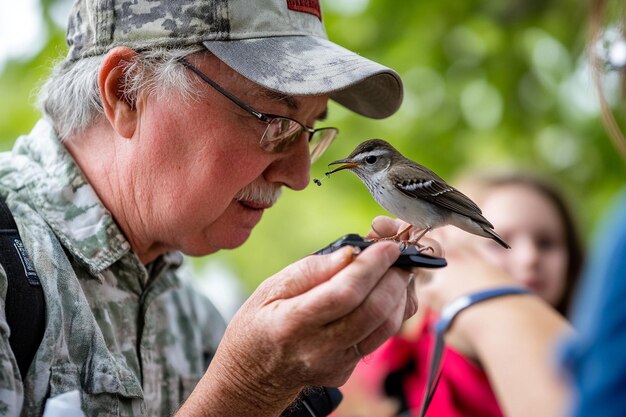Dove Hunting 101: Essential Tips for Beginners
Dove Hunting 101: Essential Tips for Beginners
Welcome to the thrilling world of dove hunting! This ancient sport not only offers an opportunity to connect with nature, but also provides a delicious source of wild game. However, for beginners, the prospect of their first dove hunt can be overwhelming. To help you prepare and make the most out of your experience, here are some essential tips.
Gear Up
Start by acquiring the necessary equipment. A good quality shotgun is essential, preferably a 12 or 20 gauge with an improved cylinder or modified choke. Don’t forget protective eyewear and earplugs. For clothing, opt for camouflage and layering to adapt to changing temperatures. Lastly, invest in a sturdy hunting vest or bag to store your gear.
Location, Location, Location
Scout for dove roosting and feeding areas before your hunt. Doves typically feed in open fields early morning and late afternoon. Roosting sites can vary from trees to power lines, so do your research or consult a local guide.
Calling and Decoys
Learn different dove calls to attract birds. The most common ones include the “purring” and “clucking” sounds. Decoys can also be effective in drawing birds closer, especially when hunting from a stationary position.
Patience and Timing
Dove hunting requires patience. Be prepared to wait for extended periods of time. The best shooting hours are typically one hour before sunrise and two hours after sunset.
5. Safety First
Safety should always be a priority. Familiarize yourself with gun safety rules and always keep the muzzle pointed in a safe direction. Be aware of your hunting surroundings, including other hunters and bystanders.
6. Practice Shooting
Before the hunt, practice shooting to increase your accuracy and confidence. Focus on improving your aim rather than your speed. This will help you maximize the chances of a clean kill.
7. Field Dressing
Learn how to field dress your dove properly to minimize waste and damage to the meat. Cleaning your catch within a few hours of the hunt is crucial. Properly storing the dove will ensure that it retains its flavor and tenderness.
8. Join a Mentor or Club
Lastly, consider joining a mentored hunt or hunting club. Experienced hunters can provide valuable insights and guidance to help you succeed in your dove hunting journey.
Conclusion
Armed with these essential tips, you’re now ready to embark on your first dove hunting adventure! Remember that the experience is more than just about bringing home game; it’s about enjoying time in nature and creating lasting memories with friends or family. Happy hunting!

A Comprehensive Guide for Beginners: Essential Tips for a Successful Dove Hunting Experience
Dove hunting, a cherished pastime in the world of bird hunting, is an engaging and thrilling activity that attracts thousands of enthusiasts each year.
Description and Popularity
Dove hunting is essentially the pursuit of migratory doves, most commonly the Mourning Dove and the European Starling. The sport takes place primarily during fall seasons when these birds travel in large flocks, making it a sociable and exciting hunting experience for participants. With the advent of technological advancements, such as specialized shotguns and decoy setups, dove hunting has grown increasingly popular among hunters seeking a challenging yet rewarding pursuit.
Importance in Bird Hunting Community
Dove hunting holds a significant position in the bird hunting community, offering not only an opportunity to connect with nature but also providing a platform for socialization and camaraderie. Furthermore, it serves as an excellent stepping stone for beginners interested in bird hunting, offering accessible targets and a relatively quick learning curve.
Essential Tips for Beginners
Familiarize Yourself with the Basics:
Begin by learning the fundamentals of dove hunting, such as shotgun types, bird identification, and safety guidelines.
1.1 Shotgun Types:
Understand the different shotguns used for dove hunting, such as semi-automatic and pump-action shotguns. Each type has distinct advantages that can help improve your hunting experience.
1.2 Bird Identification:
Learn to distinguish between different dove species and their distinct features, such as size, coloration, and flight patterns.
1.3 Safety Guidelines:
Follow essential safety guidelines, such as ensuring your shotgun is unloaded before handling and wearing ear protection to protect yourself from loud gunshots.
Gather Necessary Equipment:
Equip yourself with essentials, such as a hunting license, appropriate clothing, and a reliable shotgun.
Scout the Area:
Study potential dove hunting areas beforehand, looking for factors such as roosting sites, water sources, and feeding zones.
Practice Proper Hunting Techniques:
Master techniques like camouflaging, decoys usage, and calling to lure doves closer.
4.1 Camouflaging:
Blend in with your environment by wearing camouflaged clothing and using natural surroundings to conceal yourself.
4.2 Decoys:
Use decoys strategically to attract doves and increase the chances of a successful hunt.
4.3 Calling:
Learn to use dove calls effectively to lure birds within shooting range.
By following these tips and continually refining your skills, you’ll be well on your way to having a successful and enjoyable dove hunting experience!

Getting Started
Starting your hunting journey involves several crucial steps to ensure a safe, legal, and enjoyable experience. In this section, we’ll cover some essential aspects of getting started, including obtaining necessary licenses and permits, selecting the right gear, dressing appropriately, and finding a suitable hunting location.
Obtaining the necessary licenses and permits
Federal migration treaty requirements: Compliance with international agreements, such as the Migratory Bird Treaty Act and the North American Free Trade Agreement, is vital for hunting migratory birds like ducks, geese, and doves. Ensure you understand and adhere to these regulations.
Obtaining the necessary licenses and permits (continued)
State-specific licenses and regulations: Different states may have distinct hunting rules, so it’s essential to research the regulations for your specific location. Obtain any required hunting licenses, permits, and tags before heading out into the field.
Choosing the right gear
Shotguns: Gauge, type, and features
Gauge: The gauge of a shotgun determines the diameter of its bore. Common hunting gauges include 12, 20, and 28. Smaller gauges like .410 are suitable for smaller game or new hunters due to their lighter recoil.
Shotguns: Gauge, type, and features (continued)
Type: Over/under or side-by-side shotguns are common choices for hunting, offering versatility and reliability.
Shotguns: Gauge, type, and features (features)
Features: Consider factors like camouflage finish, adjustable stocks for a better fit, and choke tubes to alter the shotgun’s pattern.
Choosing the right gear (continued)
Ammunition: Shell type and size
Shell type: Hunting ammunition comes in various types, including lead, steel, and copper-plated. Choose the right one based on your game species and local regulations.
Ammunition: Shell type and size (continued)
Size: Select the appropriate shell size depending on the game species and your shotgun’s gauge.
Choosing the right gear (continued)
Hunting vest: Features and importance
Features: A quality hunting vest should include multiple pockets, a game bag, adjustable straps, and insulation for comfort in various weather conditions.
Dressing appropriately
Recommended clothing for various weather conditions
Weather: Wear layers of breathable, moisture-wicking clothing suitable for your local climate. Insulated jackets and rain gear can help keep you warm and dry during inclement weather.
Safety considerations (bright colors, blaze orange)
Bright colors: Wear clothing with bright colors like orange or red to make yourself visible to other hunters and reduce the risk of accidents.
Finding a hunting location
Public vs. private lands
Public: Public lands, such as national forests and wildlife refuges, offer opportunities for hunting but may have strict regulations and limited access.
Public vs. private lands (continued)
Private: Private landowners may grant hunting access in exchange for a fee or through leasing arrangements.
Scouting for suitable areas
Water sources: Look for areas where game congregates around water sources, such as rivers, lakes, and ponds.
Scouting for suitable areas (continued)
Roosting sites: Identify roosting sites, such as tree stands or blinds, to maximize your chances of success.

I Preparation and Training
- Safety procedures
-
Importance of gun safety:
-
Shotgun handling techniques:
-
Proper loading and unloading procedures:
- Bird identification:
-
Description of doves:
-
Identification tips and differences:
- Hunting ethics:
-
Respect for wildlife and habitat:
-
Following hunting regulations:
- Dog training:
-
Choosing the right breed and age:
-
Training techniques for effective retrieval:
Gun safety is paramount when it comes to dove hunting. It’s essential to understand the rules of gun safety, such as keeping the muzzle pointed in a safe direction, keeping your finger off the trigger until you’re ready to shoot, and being aware of your target and what lies beyond it.
Proper shotgun handling is another crucial aspect of dove hunting safety. This includes carrying the gun safely, mounting it correctly before shooting, and unmounting it after the shot to prevent accidents.
Learning how to load and unload your shotgun safely is essential. Always follow the manufacturer’s instructions, and be sure to keep the gun pointed in a safe direction during these procedures.
Mourning doves are the most common dove species in North America, while White-winged doves have distinct white wing patches. Understanding the physical differences between these and other dove species is important for successful hunting.
Look for the wing patches, tail pattern, and head color to help identify different dove species. Practice identifying doves in various lighting conditions and from different angles to improve your skills.
Hunting ethics play a significant role in dove hunting. Always respect the wildlife and their habitats, and avoid shooting excessively or wasting ammunition.
Adhering to hunting regulations is essential. This includes obtaining the proper licenses, following bag limits, and observing seasonal restrictions.
Selecting the appropriate dog breed and age for dove hunting is essential. Retrievers like Labradors and Golden Retrievers are common choices due to their strong instincts and desire to please.
Effective dog training involves using positive reinforcement techniques, such as rewarding good behavior with treats or praise. Regular practice sessions and consistency are crucial for developing a well-trained hunting companion.

During the Hunt
Setting up a hunting spot:
- Choosing a good position: Scout for areas where game birds frequent. Consider factors like cover, wind direction, and water sources.
- Setting decoys and blinds:
- Decoys: Place them strategically to attract birds towards your position.
- Blinds: Use natural camouflage or portable blinds to conceal yourself from the birds’ view.
- Camouflaging yourself: Blend in with your surroundings using clothing, face paint, and camouflage netting.
Calling techniques:
- Different types of calls:
- Clucks:: Mimic the sound of a distressed hen to attract males.
- Purring:: Sounds like a contented hen, often used to lure in Toms.
- Quacking:: Used for waterfowl like ducks and geese.
- Proper call usage and etiquette:
- Use calls sparingly to avoid alerting other hunters or scaring away birds.
- Learn the differences between various bird species’ calls and use appropriate ones.
Shooting strategies:
- Positioning for a successful shot:
- Maintain a stable shooting stance with proper gun mount and aim.
- Anticipate the bird’s flight path and prepare for the shot.
- Leading the bird correctly:
Shoot ahead of the target to ensure a clean kill.
Bird recovery and care:
- Proper field dressing techniques:
- Remove entrails, feathers, and head.
- Rinse the bird with cold water.
- Storing and transporting game birds:
Follow proper procedures to minimize damage and preserve meat quality.
Keep them cool and dry to maintain freshness.

Conclusion
As we reach the end of this comprehensive guide for hunting beginners, it’s essential to summarize the key takeaways and offer encouragement for your continued journey into the world of hunting.
Recap of Essential Tips
- Properly prepare: Ensure you have all the necessary gear, clothing, and licenses before heading out.
- Safety first: Always prioritize safety and follow local regulations to ensure a successful and safe hunting experience.
- Learn from experts: Seek advice from experienced hunters or join a local club for valuable insights and knowledge.
- Practice your skills: Regularly practice shooting and other essential hunting skills to improve your chances of success.
- Respect the land: Understand the importance of respecting the environment and wildlife, leaving no trace behind.
Encouragement to Practice and Gain Experience
Don’t be discouraged if your first few hunting trips don’t result in a successful harvest. Hunting is an art that requires patience, dedication, and continuous learning. Embrace each new experience as an opportunity to grow and improve your skills.
Suggestions for Continued Learning and Improvement
Read: Expand your knowledge through books, online resources, and hunting magazines. Attend workshops: Participate in educational workshops and seminars to learn from experts in the field.
Invitation to Join Local Hunting Clubs or Organizations for Further Knowledge and Support
Connect with like-minded individuals: Joining a local hunting club or organization is an excellent way to learn from experienced hunters, share knowledge, and build relationships within the community. Stay informed: Stay updated on local hunting regulations, best practices, and conservation efforts.

